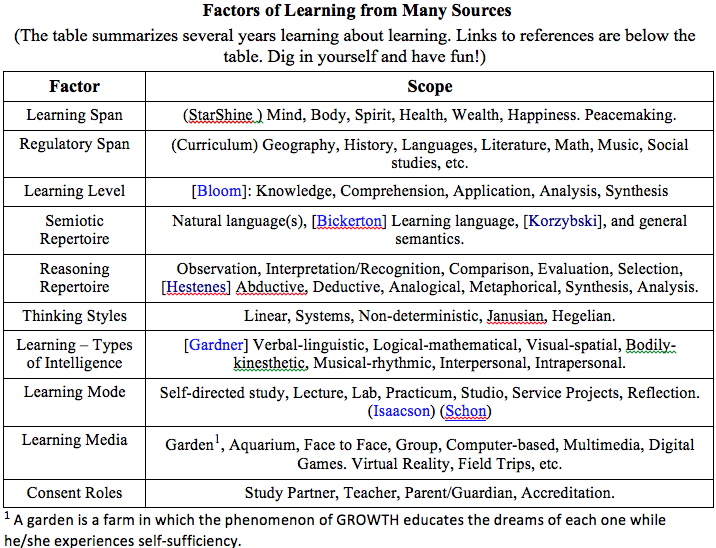Coffee With Doc: EDUCE.
Educe: Education that Learns
By Jack Ring
Whether children or adults, most of us love to learn; we don’t like to be taught – told by an authority. Great “teachers” know this. They guide each learner’s self-discovery. Anything you discover may be old knowledge, but when you see it for the first time, it’s new to you.
A great teacher is a Leader for Learning (LoL), and a great deal of research backs this idea. We discussed this in a Compression dialog teleconference on March 28, 2017. I’m a career technology and software guy with a long-time interest in how people learn. I have been digging deeper into education and learning during the last seven years as an advisor to the StarShine Academy (K-12) in Phoenix. The teleconference dialog took off from my outline of dialog prompts, a version of which follows:
Educe means to draw out something hidden, latent, or reserved. This relates to both a) the (questionable) philosophy that each person already knows everything, just doesn’t know they know and b) the notion that knowing entails placing a factoid in relation to other factoids, building a system of knowledge. Knowing also involves assessing the efficacy of the system of knowledge thusly devised, especially its limits of applicability.
Efficacy: Check your work. Otherwise as Mark Twain, Will Rogers and Ronald Reagan each observed, “It isn’t what we don’t know that gets us in trouble, it is what we do know – that ain’t so!”
Teach is the opposite of Educe. Paraphrasing Winston Churchill, “I love to learn; it is being taught to which I object.”
Educe is a two-party activity. One party, the Learner, learns when the other party, the Leader of Learning (LoL) creates a suitable learning environment. Learners generally agree that their desired learning environment is “safe and fun.” Likewise, the LoL’s learn from the Learners. This encourages the Learners to learn more about learning which makes them better leaners.
Unfortunately most Ph.D. dissertations are not team efforts which means that dual-loop learning is forestalled.
Kids transitioning through K-12 education go through three modes of learning:
- Learners < age seven amass factoids and knowing. They also experience a life event that conditions their proclivity for optimism vs. pessimism.
- Learners seven to thirteen shed 50% of the neural paths they had amassed. They become persons. They learn to learn from mistakes.
- Learners > 13 start to become citizens, generate a Return on Investment, and evolve into Leaders of Learning as reflective practitioners.
At the StarShine Academy in any age range, the key is goals. Goals inspire exploration. A life without the joy of goals achieved is a life without Self Esteem, which becomes a prematurely terminated life either emotionally (“The only thing necessary for the triumph of evil is for good men to do nothing.” – Edmund Burke), or physically (high suicide rates).
Key 1: Systems seeing, thinking, feeling, doing. Kids under 6 do this naturally until the U.S. public schools suppress it.
References: Joe Novak’s theories http://cmap.ihmc.us/docs/theory-of-concept-maps leverage David Ausubel’s theory of learning (https://en.wikipedia.org/wiki/David_Ausubel) Two good starter books on systems thinking are: Thinking at Every Desk and Systems Thinking Made Simple, both by D. and L. Cabrera.
Systems thinking goes beyond knowing to making, seeing what works and what doesn’t.
Key 2: Purpose and Principles
Purpose of kids: Realizing dreams through education
Purpose of Academy: Help all kids save themselves as fast as we can
Purpose of Academy: Helping teachers become Leaders of Learning
Principles (Starshine Academy): http://www.starshineacademy.org/Content2/34)
Key 3: Clinical method of facilitating learning. Each age group LoL’s the younger group. Each graduate experiences N years as a LoL.
Key 4: Relevant curricula:
Spans curricula not only for K-12 public schools: but also Mind, Body, Spirit, Health and Wealth.
The state’s standard curricula are translated into kid-world examples. Curriculum mapping makes each session reinforce prior sessions such that pace and retention are accelerated up to three fold.

Links to references (in blue) in table:
Bloom: http://www.nwlink.com/~donclark/hrd/bloom.html
Bickerton: www.nwlink.com/~donclark/hrd/bloom.html
Korzybski: http://www.gestalt.org/semantic.htm
Hestenes: https://www.ncbi.nlm.nih.gov/pmc/articles/PMC4798799/
Gardner: http://www.tecweb.org/styles/gardner.html
Isaacson: https://cft.vanderbilt.edu/wp-content/uploads/sites/2/sites/59/Isaacson2007Meta.pdf
